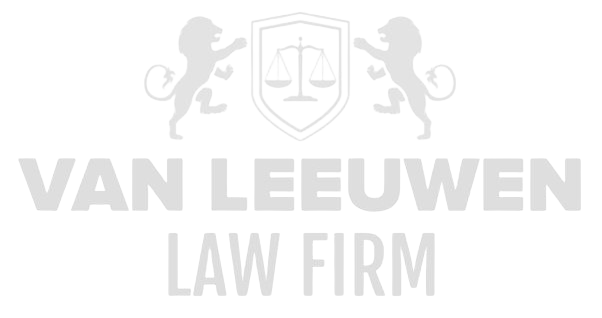Climate-related migration is rapidly evolving into a systemic risk factor that confronts companies operating in geopolitically sensitive regions with a complex and multilayered spectrum of legal, operational, and governance challenges. The displacement of populations due to extreme weather events, prolonged drought, rising sea levels, or structural environmental degradation creates a dynamic that places both the stability of local institutions and the integrity of economic ecosystems under pressure. For companies active in areas where the arrival or relocation of vulnerable communities coincides with political tensions, weak state structures, or limited supervisory capacity, a distinct risk profile emerges—one that spans compliance obligations, reputational vulnerabilities, and liability exposure. The interaction between humanitarian needs, local power structures, and international normative frameworks heightens the likelihood of incidents capable of significantly disrupting business operations and undermining legal positions.
At the same time, this new reality implies that companies are increasingly assessed on the extent to which they anticipate societal and regulatory expectations in a careful, transparent, and legally grounded manner when operating in migration-sensitive contexts. The intensification of oversight, the growing attention of NGOs and civil society, and the legal consolidation of international duty-of-care and human-rights norms have created an environment in which negligence, insufficient risk analysis, or inadequate integrity safeguards more readily give rise to disputes, sanctions, or public criticism. This situation requires a deep and detailed approach to risk identification, one that considers not only the direct operational impact but also the broader systemic risks associated with shifting migration patterns and the fragility of local institutions.
Fraud and Corruption Risks in Humanitarian Programmes or Local Compensation Schemes
Humanitarian programmes and compensation mechanisms in regions subject to migration pressure are often characterised by diffuse governance structures, limited supervisory infrastructure, and a high reliance on informal decision-making channels. This combination creates an environment in which the misuse of resources, conflicts of interest, or manipulation of distribution processes becomes a tangible risk. Companies contributing to, participating in, or depending upon such programmes may therefore be indirectly exposed to fraud- or corruption-related liabilities that significantly complicate their compliance posture.
The presence of vulnerable communities increases pressure on local authorities, reducing their capacity to safeguard integrity within financial flows. In situations where funds must be deployed quickly—whether to support displaced populations or stabilise local infrastructure—accelerated decision-making often constrains the ability to conduct adequate due diligence. As a result, the risk increases that companies inadvertently become involved in practices that violate international anti-corruption standards or disproportionately benefit local power groups.
Humanitarian partners, NGOs, and implementing organisations frequently operate with divergent governance standards, resulting in fragmented responsibilities and ambiguity in oversight structures. This complexity makes it necessary for companies to implement extensive monitoring and auditing mechanisms capable of safeguarding the integrity of all involved actors. Failure to do so may lead to allegations of negligent oversight, breaches of contractual obligations, or non-compliance with international anti-corruption norms.
Money-Laundering Risks in Relief Funds or Emergency Suppliers Operating in Unstable Regions
Relief funds and emergency suppliers operating in fragile institutional environments form vulnerable nodes within international financial and logistical networks. The need to mobilise resources quickly and flexibly generates a structure in which controls on the origin, destination, and legitimacy of funds come under pressure. This, in turn, increases the likelihood that financial flows will be exploited for money-laundering activities or the financing of illicit operations, exposing companies to significant legal and regulatory consequences.
Dependence on local intermediaries further amplifies these risks, as such actors often operate without robust compliance systems or independent oversight. These intermediaries can serve as gateways for uncontrolled financial transactions, leaving companies vulnerable to scrutiny by authorities questioning the origin of funds or the integrity of cash-based distribution mechanisms. Such situations may result in extended investigations, frozen transactions, or reputational damage arising from alleged association with illicit financial flows.
Migration pressure also disrupts local markets through the emergence of temporary suppliers, ad-hoc logistical solutions, and emergency contractors that may not meet internationally recognised standards for customer identification, transaction monitoring, or integrity assurance. The combination of urgency, limited documentation, and rapidly shifting local dynamics increases the risk that companies will become entangled in transactions later deemed insufficiently transparent or in violation of anti-money-laundering regulations. Omissions of this nature can carry substantial legal repercussions, including fines, sanctions, or civil liability.
Violations of Sanctions Regimes During Operations in Geopolitically Sensitive Migration Zones
Migration zones that simultaneously function as geopolitical flashpoints are often subject to international sanctions regimes ranging from sector-specific restrictions to comprehensive prohibitions on trade and financing. Companies active in such regions must navigate a layered and continuously evolving set of legal obligations, where even minor operational deviations can constitute sanctions violations. The presence of displaced populations and humanitarian organisations may further create situations in which goods, services, or financing indirectly benefit sanctioned entities—regardless of intention.
The complexity is heightened by the fact that humanitarian exemptions within sanctions frameworks are typically narrowly defined and accompanied by strict documentation and reporting requirements. Companies relying on local distribution networks, logistical hubs, or government authorities risk engaging—directly or indirectly—with entities subject to restrictive measures if transaction chains lack transparency. Even marginal involvement can trigger extensive inquiries by sanctions authorities with the potential to significantly disrupt commercial continuity.
Sanctions regimes are also frequently deployed as tools of geopolitical leverage, resulting in rapid changes in scope or interpretation. Companies that fail to continuously update their sanctions screening, contract management, and supply-chain monitoring may find that previously compliant operations suddenly fall afoul of tightened regulations. In migration-affected regions, where informal structures are prevalent, the risk of inadvertent violations increases considerably, potentially leading to substantial financial penalties, market exclusion, or severe reputational damage.
Allegations of Mismanagement When Social Instability Disrupts Business Operations
In regions where climate-driven migration heightens social tensions, the operational context for companies can shift abruptly and unpredictably. Conflicts over scarce resources, evolving local power dynamics, and rising security incidents can disrupt business activities while simultaneously prompting accusations of mismanagement. Stakeholders may assert that a company failed to implement adequate anticipatory measures or did not sufficiently account for the influence of migration-related instability in strategic decision-making.
Social instability also creates an environment in which operational decisions—such as suspending activities, deploying additional security measures, or rerouting logistics—become subject to intense scrutiny by both public and private actors. If such decisions result in harm, delays, or increased risks for employees or communities, they may be interpreted as evidence of deficiencies in risk-management systems. This can open the door to civil litigation or contractual disputes in which companies must justify the adequacy of their governance and compliance structures.
Moreover, perceived shortcomings in stakeholder engagement or insufficient communication with local communities may trigger criticism from NGOs, regulators, or investors. Such perceptions can escalate into reputational harm, particularly when public opinion associates migration-related issues with the responsibilities of companies operating in affected regions. In such circumstances, mere regulatory compliance may prove insufficient if stakeholders believe that the company has inadequately fulfilled its duty of care or social responsibility.
Reputational Erosion Due to Alleged Complicity in Misconduct Affecting Vulnerable Communities
Companies operating in areas where migration and vulnerability intersect face a heightened risk of being publicly associated with misconduct, even absent direct involvement. The prevalence of informal labour markets, unregulated aid programmes, or local armed groups can create conditions in which external observers perceive a company as benefiting from or contributing to harmful practices. Once such perceptions take hold in public discourse or media reporting, they are difficult to reverse and may lead to long-term reputational erosion.
Civil-society organisations and NGOs are increasingly active in deploying monitoring and reporting tools to document abuses in migration-affected regions. Their reports and publications frequently make indirect reference to companies simply by virtue of their presence in areas where human-rights violations or insufficient protection of vulnerable groups occur. The mere fact of operating in such a context may be interpreted as a form of complicity, exposing companies to public pressure, investor scrutiny, and heightened ESG assessments.
Shortcomings in due-diligence processes can further reinforce the perception that a company has failed to take adequate measures to mitigate risks affecting vulnerable communities. Even where risks have been properly identified, the absence of visible or publicly communicated mitigation measures may create a narrative of negligence. Resulting reputational damage can translate into commercial losses, reduced investor confidence, and weakened leverage in contractual negotiations.
Contractual Disputes with Security and Logistics Partners in Conflict Zones
Security and logistics partners operating in areas where climate-related migration coincides with conflict often function within a dynamic marked by continually escalating risks, limited predictability, and weak institutional stability. In such environments, the likelihood of contractual friction increases significantly when commitments regarding response times, security levels, capacity, or adherence to quality standards become unrealistic due to deteriorating conditions on the ground. Companies may then face claims that they have imposed unreasonable demands or failed to provide timely supplementary instructions, while partners may invoke force majeure, changed circumstances, or implicit adjustment rights contained in contractual clauses. This creates a legal tension in which competing interpretations of contractual obligations pose a substantial risk of protracted disputes.
In addition, heightened migration pressure may result in the emergence of ad-hoc checkpoints, new power dynamics, and rapidly fluctuating security conditions. These factors directly affect the feasibility of logistical routes and the availability of security personnel, with the result that performance commitments under contracts may be disrupted daily. When security partners are required to take additional measures—ranging from deploying extra protective equipment to rerouting transport—cost increases arise that cannot always be absorbed within existing contractual frameworks. Companies may then be faced with the choice of granting additional compensation or risking a suspension of services, both of which can have significant implications for business continuity and the fulfilment of obligations further along the value chain.
At the same time, divergent expectations regarding compliance obligations can give rise to disputes. Partners may operate under varying standards related to human rights, sanctions rules, integrity safeguards, and documentation, resulting in discrepancies between what is contractually required and what is operationally feasible. If suppliers or security partners fall short in their reporting duties, due-diligence standards, or supply-chain transparency requirements, this may lead to allegations of breach of contract or non-conformity. The outcome is a complex negotiation environment in which companies must balance operational necessity, legal clarity, and the preservation of strategic relationships with critical partners.
Governance Pressure on Due Diligence Concerning Human Rights and Local Integrity
Companies operating in migration-sensitive regions increasingly face external pressure to significantly reinforce their due-diligence processes in relation to human rights and local integrity. International frameworks—including principles derived from the United Nations human-rights architecture and sectoral obligations embedded in sustainability regulations—have established an expectation of thorough and ongoing risk assessment. In contexts where migration patterns are shifting and social structures are under strain, companies are expected to revise and adapt their oversight systems to reflect heightened complexity. Failure to anticipate these developments may be viewed as a breach of international duty-of-care standards and may trigger critical interventions by regulators and civil-society actors.
The need for robust due-diligence frameworks is further amplified by the presence of informal labour markets, alternative power structures, and limited state capacity, all of which heighten the risks of exploitation, corruption, or human-rights violations. When companies depend on local implementers, temporary workers, or contractors lacking substantial compliance infrastructure, gaps in monitoring and reporting become more likely. If such gaps are not addressed promptly, they may give rise to significant governance criticism, with investors, NGOs, and civil-society bodies pressing for strengthened internal controls, enhanced contractual requirements, and more rigorous stakeholder-engagement mechanisms.
Governance pressure also manifests through rising transparency and reporting expectations. External stakeholders increasingly expect companies not only to identify and mitigate risks but also to demonstrate how decisions are made, how internal escalation procedures operate, and how oversight structures function in practice. In migration-affected regions—where risks can escalate rapidly and decisions are often made under time pressure—these expectations pose a considerable challenge. A lack of detailed documentation or inconsistencies in reporting can lead to claims that governance structures are inadequately designed, thereby magnifying both reputational and legal risks.
Litigation Risk from NGOs Due to Insufficient Mitigation of Social and Societal Risks
In regions affected by climate-driven migration, NGOs, civil-society organisations, and advocacy groups increasingly rely on legal tools to hold companies accountable for alleged shortcomings in managing social and societal risks. These stakeholders focus not only on direct harm or violations but also on purported failures to anticipate risks, insufficient due diligence, or inadequate implementation of mitigation measures. As a result, companies may find themselves navigating a legal landscape in which strategic litigation seeks both damages and structural changes in corporate behaviour.
Litigation risk is further heightened by a global trend in which courts appear more willing to entertain claims grounded in duty-of-care doctrines, human-rights principles, or sustainability regulations. In a migration context, this can mean that companies are sued for indirect or supply-chain-related impacts that occur outside their immediate control, such as alleged failures to protect vulnerable groups or inadequate oversight of local service providers. Such proceedings can evolve into lengthy disputes, entail significant legal costs, and require disclosure of internal processes, thereby placing substantial pressure on governance structures and reputation management.
NGOs also play a prominent role in documenting conditions in migration-sensitive regions, accumulating extensive evidence that can be leveraged in litigation. If reports or field investigations suggest that companies could have taken additional steps to mitigate risks, such findings can be invoked to argue that duty-of-care standards were breached. The combination of public expectations, judicial receptiveness, and strategic legal action creates an elevated litigation risk that obliges companies to adopt proactive and meticulous approaches to risk management and compliance.
Supervisory Actions for Inadequate Compliance with International Duty-of-Care Frameworks
International duty-of-care frameworks—progressively embedded in national and supranational legislation—form a critical normative basis for companies operating in migration-sensitive regions. Regulators have increased their focus on situations in which companies cannot adequately demonstrate that they systematically identify and mitigate risks related to human rights, integrity, and local stability. In the context of climate-driven migration, where social conditions can shift rapidly and vulnerabilities deepen, inadequate compliance is no longer seen as a mere administrative deficiency but as a material risk to stakeholders.
This heightened attention translates into more intensive audits, thematic investigations, and detailed information requests by national authorities and international bodies. Companies may be required to provide comprehensive risk assessments, documentation of supply-chain monitoring efforts, and evidence of engagement with local communities. If such information is deemed insufficient or inconsistent, regulators may take enforcement action, ranging from corrective instructions and improvement mandates to administrative sanctions. These interventions not only impose operational burdens but also pose reputational risks, as findings are often made public.
In addition, companies are increasingly expected to demonstrate that duty-of-care obligations are embedded within governance structures, strategic decision-making, and contractual relationships with partners. A purely formalistic approach—such as maintaining policies without effective implementation—has become unacceptable to many regulators. Particularly in regions where migration and instability intersect, inadequate compliance may be interpreted as an indication that risks are either systematically underestimated or insufficiently mitigated. This significantly increases the likelihood of supervisory intervention with both legal and commercial consequences.
Increased Exposure in Supply Chains Where Migration Pressure Leads to Exploitation or Corruption
Supply chains spanning regions with high migration pressure exhibit heightened vulnerability to exploitation, unlawful labour conditions, and corruption-related risks. Migrant populations often face limited access to formal labour markets and legal protections, making them more susceptible to abuse by informal intermediaries or opportunistic suppliers. Companies relying on such local structures face substantial risks of becoming indirectly linked to labour abuses, improper recruitment practices, or corruption within sub-tier suppliers, thereby undermining the integrity of the entire supply chain.
Instability in migration-affected regions also drives constant shifts in supplier networks. New, temporary actors often enter the market without adequate governance mechanisms or compliance systems, further obscuring supply-chain transparency. Companies lacking visibility into the origin of goods, production conditions, or the identity of subcontractors risk exposure to legal investigations, supervisory actions, or civil-society criticism for insufficient supply-chain oversight. Additionally, trade restrictions or sanctions associated with human-rights violations may abruptly limit the availability of certain goods, placing further pressure on supply-chain continuity.
At the same time, the absence of robust audit mechanisms may prompt external observers to argue that companies have failed in their duty of care and have not taken sufficient steps to mitigate risks of exploitation or corruption. Stakeholders may highlight gaps in monitoring, inadequate oversight of sub-tier suppliers, or the lack of effective escalation procedures. In an environment where public expectations concerning labour rights and integrity have increased significantly, such perceptions can quickly escalate into reputational harm, contractual disputes, and legal liability. This creates a compelling need for companies to recalibrate their supply-chain structures by integrating deep risk analysis, continuous monitoring, and stringent due-diligence processes.









